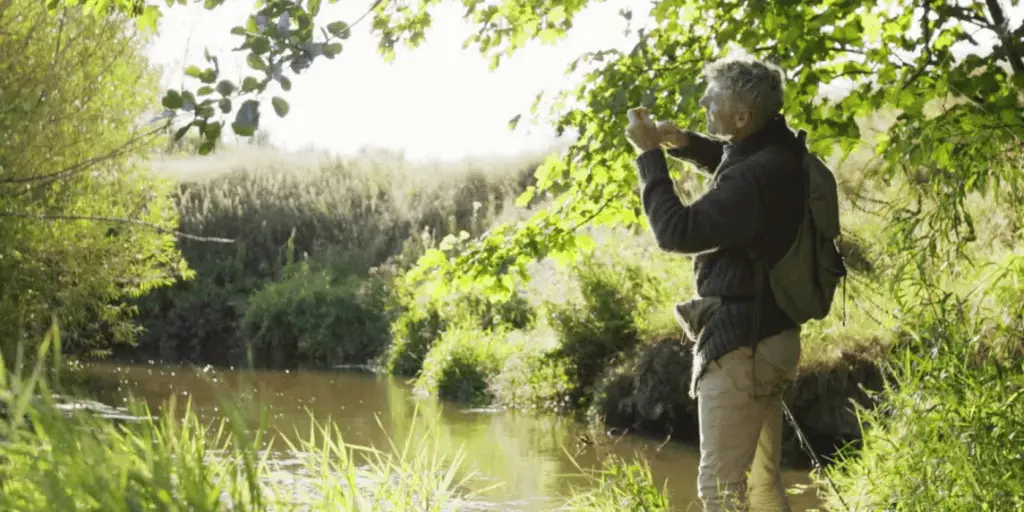Saltwater fishing is a popular outdoor activity that can be enjoyed by just about anyone. If you’re new to the fishing, choosing the right saltwater fishing line is essential. In this exclusive guide, we’ll review some of the best spinning reel lines for saltwater fishing, based on user reviews and ratings.
Top 5 Fishing Lines For Spinning Reels
Saltwater fishing is a popular sport that can be enjoyed by anyone, regardless of their experience or skill level.
One of the most important things you need for saltwater fishing is a good fishing line. And, there are a lot of different types of fishing lines available on the market today. Which one is the best for your spinning reel?
There are a few factors to consider when choosing the best saltwater fishing line. These include weight, strength, and performance.
Weight is important because it affects how easy it is to cast your line. A lightweight fishing line will fly farther than a heavier line, but it will also wear out faster.
Strength is also important. A strong fishing line won’t break easily, which means you’ll be able to pull in bigger fish with less effort.
And, last but not least, performance is key when it comes to saltwater fishing lines. A good line should perform well in all sorts of water conditions. It shouldn’t knot easily and it should hold its drag setting throughout the entire cast.
If you’re looking for the best saltwater fishing line for your spinning reel, look no further than the Absolute Power Pro
What are the different types of saltwater fishing lines?
When it comes to saltwater fishing, there are a few different types of lines that you’ll need to consider. You have your casting lines, which are used for baitcasting and trolling; your spinning lines, which are used for Species fishing; and your top-of-the-line draglines.
Casting Lines
Casting lines are the most common type of line you’ll use for saltwater fishing. They’re made out of various types of materials, including mono, braid, and fluorocarbon. They’re designed to be light and thin, so they can be cast a long way with little effort.
Spinning Lines
Spinning lines are perfect for Species fishing. They’re made out of a specifically formulated material called fluorocarbon, which is incredibly strong and doesn’t get tangled as easily as other types of line. They come in different sizes and weights, so you can find the perfect one for your favorite fish.
Draglines
Draglines are the ultimate saltwater fishing line choice if you’re looking for a big catch. They’re made from heavy-duty materials like steel cable and fiberglass, so they can hold their own against even the biggest fish.
How do saltwater fishing lines work?
Saltwater fishing lines are different from freshwater fishing lines in a few ways. First and foremost, saltwater fishing lines are designed to resist tangling. Fishing lines with larger diameter wire tend to be more resistant to tangle than those with smaller diameter wire. Additionally, saltwater fishing lines are also designed to hold their tension longer, which is critical for catching big fish. Saltwater fishing lines are also typically made of heavier gauge wire than freshwater fishing line, which allows them to hold up better to the abuse inflicted by big fish.
When choosing the best saltwater spinning reel for your needs, it’s important to consider the type of fish you’re targeting, the environment you’ll be fishing in, and your own personal preferences.
What is the best saltwater fishing line for spinning reel?
There are a lot of factors to consider when choosing the best saltwater fishing line for spinning reel, including weight, strength and diameter. However, one key factor to keep in mind is the type of drag system your reel uses.
When choosing a line for spinning fishing, it is important to choose a line that will work with your particular reel. For example, if your reel uses a single or friction drag system, you will want to choose a line with a higher resistance to avoid snagging your fish. Conversely, if your reel uses a electronic drag system, you might want to select a line that has less resistance so the fish will jump more easily.
Once you have chosen the right line for your reel and fish conditions, be sure to adjust the tension on the spool regularly in order to maintain optimum performance.
Which type of saltwater fishing line is the best for me?
When it comes to saltwater fishing, there are a few things to take into account. The type of bait you’re using, the fish you’re targeting, and the type of spinning reel you have.
When it comes to trolling for fish, a heavier line is usually better. This is because it gives you more resistance when casting out and allows you to more easily keep the bait in front of the fish.
When fishing with spinners, a thin line is usually best. This is because it gives you less resistance when reeling in your catch and allows you to more easily see what your catch is doing.
There are many different types of spinning reels on the market, so it can be tough to decide which one is right for you. If you’re new to saltwater fishing, we recommend that you start out with a lightweight reel. These reels are easier to use and don’t require as much strength to operate. Once you get comfortable with saltwater fishing, we recommend upgrading to a heavier reel that will give you better performance when targeting big fish.
Types Of Line For Spinning Reels
There are a few different types of line that can be used for spinning reels. The most common types are braid, monofilament, and superline. Each has its own advantages and disadvantages.
Braid is the most common type of fishing line because it’s strong and flexible. It won’t tangle in the reel or on the fish, making it a good choice for beginners. However, braid doesn’t offer much resistance to backing out, so it’s not the best choice for big fish.
Monofilament is less flexible than braid, but it’s much stronger. This makes it better for fighting big fish, but it can also be more difficult to grip. Monofilament also doesn’t fray as easily as braid, which is a plus if you plan on keeping your line clean.
Superline is the most resistant of all lines to breaking. It’s also the heaviest, making it better for long-distance fishing. However, superline is difficult to handle and can be expensive.
Braided Fishing Lines
Braided fishing lines are becoming increasingly popular as they offer many advantages over monofilament lines. They are much easier to cast and have a much smoother feel when reeling in a fish. Here are some of the best braided fishing lines for spinning reels:
The Daiwa Sushi Pro is a great line for those who want to catch big fish. It’s made with 50 pound test braid and is designed for use with a spinning reel. The line has a durable build and is easy to handle.
The Abu Garcia Veritas Vibe is another good choice if you’re looking for a braided line that will handle big fish. It’s made with 100 pound test braid, making it strong enough to take on even the largest fish. The line also has a very smooth feel, making it easy to reel in big catches.
If you’re looking for a budget-friendly option, the Shimano Tourney XT might be worth considering. It’s made with 20 pound test braid and is perfect for smaller fish or beginner anglers. The line has a soft, silky feel that makes it easy to reel in even the smallest specimens.
Monofilament Fishing lines
When it comes to saltwater fishing, spinning reels are always a popular option. But which line is the best for this type of fishing?
There are a few things to take into account when choosing a spinning reel line. First and foremost, you want to make sure that the line has enough strength to support your weight and tackle. Second, you need to think about the type of fish you’re targeting. Some lines are better for bait fishing while others are better for catching big fish.
Fluorocarbon Fishing Lines
When it comes to saltwater spinning fishing, fluorocarbon fishing lines are the go-to choice. Fluorocarbon is a synthetic line material that’s far superior to other types of fishing lines when it comes to strength and durability. That’s because fluorocarbon is made from carbon molecules that are bonded together in a very strong molecule. This makes fluorocarbon Fishing Lines incredibly resistant to breaking, even under extreme conditions.
While fluorocarbon Fishing Lines are a bit more expensive than other types of fishing lines, they’re definitely worth the investment. Not only do they offer exceptional strength and durability, but they also tend to cast further and more accurately than other types of fishing lines. If you’re looking for the best saltwater spinning Fishing Line for your reel, then fluorocarbon is definitely the option you should consider.
Should The Line Be Invisible?
While there are a number of factors to consider when making this decision, one of the most important is visibility. If the line isn’t visible, it’s more difficult for you to find and set the hook. This can ultimately lead to lost fish and frustrating fishing experiences.
So how do you choose a line that’s both effective and visible? One option is to go with an invisible line. These lines are made from materials that are transparent or nearly so, which makes them easy to see when casting and reeling in your fish.
However, invisible lines aren’t perfect. They can be difficult to set correctly and can lead to missed opportunities if you’re not careful. If you’re looking for an edge in the competition, it’s important to choose a line that’s both effective and visible. That means going with a traditional fishing line instead of an invisible option.
Line Colors
When it comes to saltwater spinning gear, choosing the right line color is essential for catching big fish. The following are some of the most popular saltwater line colors and their corresponding uses:
Blue Line: This line is used for trolling in close to shore. It’s also effective when fishing off of a pier or boat.
Green Line: The green line is a great choice for down-the-line trolling. It’s also an effective baitcaster line because it has a strong, long cast.
Gray Line: This line is used for casting lures out to deeper water. It’s also a good choice when targeting bluefish or striped bass.
Twisting Lines
Look for the fishing lines which are designed to reduce or eliminate the rolling around of lures. This can often happen when there is a lot of head on the line. The lines naturally curl around themselves and tangle in no time. You should always store your line on the reel with the flat side of the spool facing you. This ensures that when the line comes off of the spool, it is coming in a direction that will prevent any twists.
Conclusion
When it comes to saltwater fishing, finding the right line can make all the difference. While there are many different types of saltwater lines available on the market today, we’ve compiled a list of the best spinning reel lines for saltwater fishing based on our personal experience and feedback from verified buyers on Amazon. Consider using one or more of these lines when you head out to fish in open water this season!




